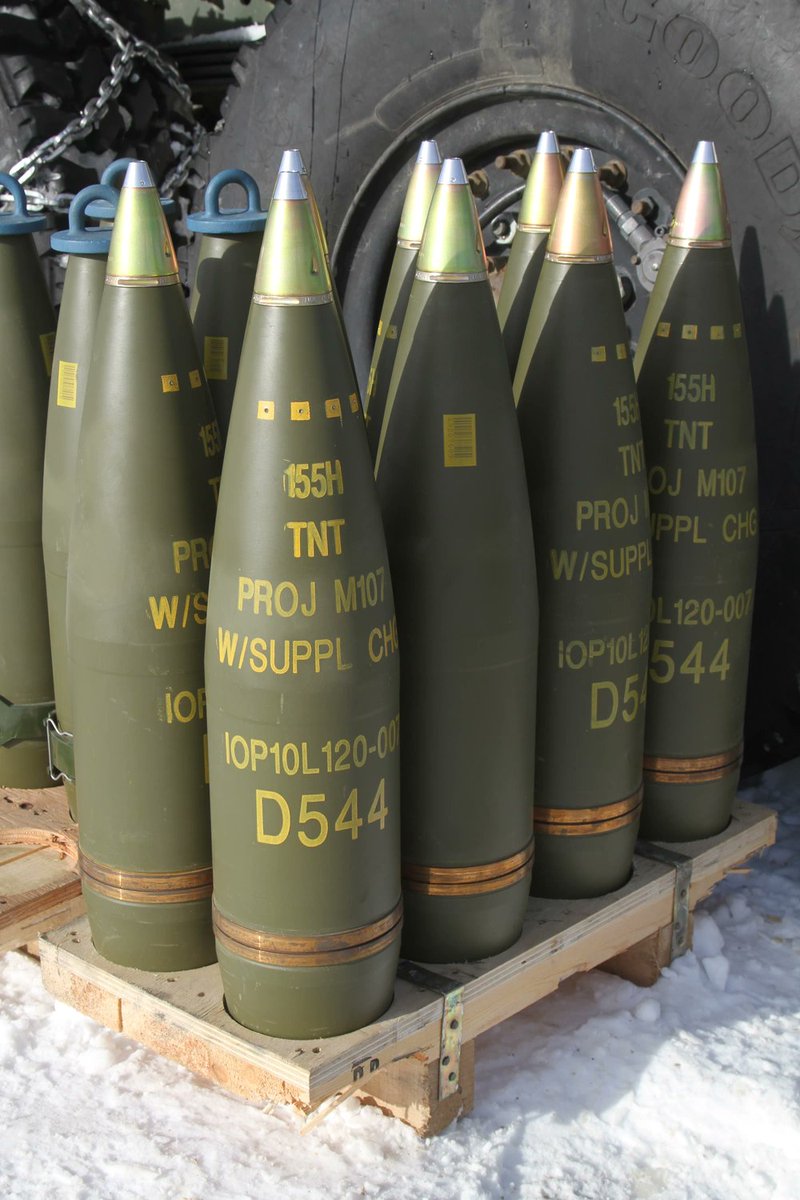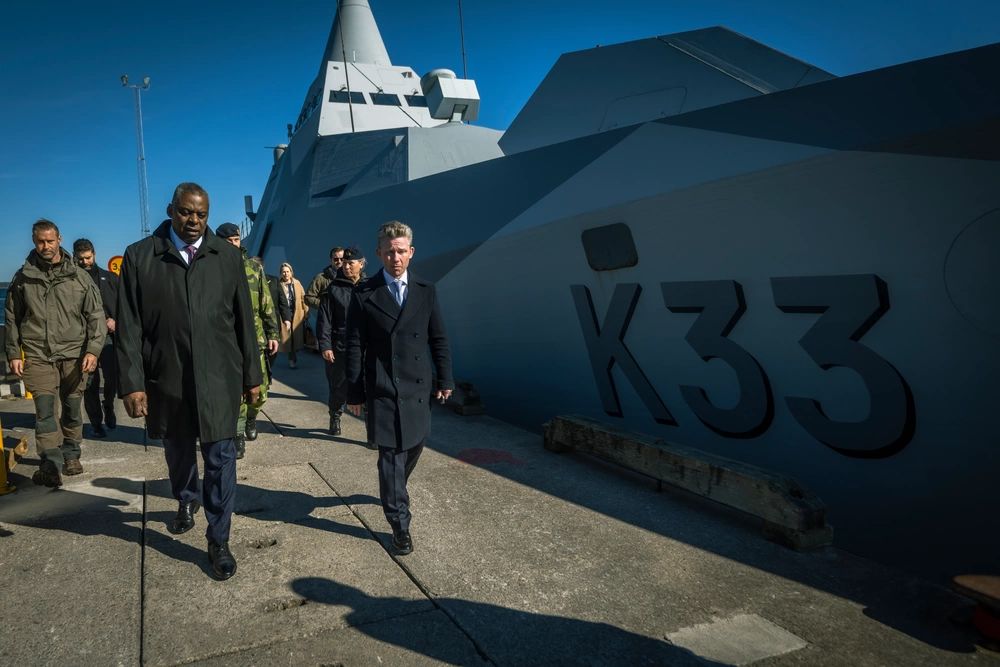Ukraine is still likely to be outgunned by Russia for much of the rest of 2024–that's even with $60B in U.S. military aid.
U.S. and Europe are only just starting to ramp up artillery production.
Here are 3 questions that will define the industrial war in 2024.
(🧵)
U.S. and Europe are only just starting to ramp up artillery production.
Here are 3 questions that will define the industrial war in 2024.
(🧵)

1⃣ Can the US and Europe restock fast enough?
The expectation is that Biden admin will spend much of 2024 rebuilding US stockpiles.
US Army aims to produce 100,000 artillery rounds / month by end 2025.
Most of the EU's target to get 1.4m shells into 🇺🇦 hands won’t get there until the end of 2024.
The expectation is that Biden admin will spend much of 2024 rebuilding US stockpiles.
US Army aims to produce 100,000 artillery rounds / month by end 2025.
Most of the EU's target to get 1.4m shells into 🇺🇦 hands won’t get there until the end of 2024.

So Ukraine’s partners on the continent are searching for suppliers outside of Europe to find enough artillery to keep Kyiv’s guns hot.
Czech Republic appears to have sourced enough $$$ to buy 500,000 rounds of 155mm.
Refurbishing old ammo is about 30% cheaper than buying new shells, but much of it comes from fmr Soviet satellites.
Here @antti_ruokonen's excellent @lawfare analysis on the trendlines for 155mm artillery.
Czech Republic appears to have sourced enough $$$ to buy 500,000 rounds of 155mm.
Refurbishing old ammo is about 30% cheaper than buying new shells, but much of it comes from fmr Soviet satellites.
Here @antti_ruokonen's excellent @lawfare analysis on the trendlines for 155mm artillery.

2⃣ Can Ukraine survive a defensive war?
For months, 🇺🇦 troops have been firing about 2,000 rounds/day, barely enough to sustain a defensive war.
"I think it’s fair to assume that the Ukrainians for the next 12 months will be able to have a .. fire rate of roughly 75,000-85,000 [shells] per month," said @HoansSolo.
That's ~2,400–2,500 rounds/day.
For months, 🇺🇦 troops have been firing about 2,000 rounds/day, barely enough to sustain a defensive war.
"I think it’s fair to assume that the Ukrainians for the next 12 months will be able to have a .. fire rate of roughly 75,000-85,000 [shells] per month," said @HoansSolo.
That's ~2,400–2,500 rounds/day.
That doesn’t leave any room for offensive operations this year.
The Biden admin can also supply $500m in artillery-fired cluster munitions, which officials believe are 4-5x more explosive than conventional 155mm rounds.
The weapons are controversial because their high "dud" rates, as @RobbieGramer and I have written.
foreignpolicy.com/2023/01/10/tur…
The Biden admin can also supply $500m in artillery-fired cluster munitions, which officials believe are 4-5x more explosive than conventional 155mm rounds.
The weapons are controversial because their high "dud" rates, as @RobbieGramer and I have written.
foreignpolicy.com/2023/01/10/tur…
3⃣ Is Russia's war industry maxed out?
Russia is on track to produce 3.5 million rounds in 2024 and might be able to surge to produce 4.5 million by the end of the year.
Russia is on track to produce 3.5 million rounds in 2024 and might be able to surge to produce 4.5 million by the end of the year.
But there are questions as to whether Russia is starting to max out.
The Kremlin can’t extend working hours—weapons shops are already working around the clock—so European officials expect that Russia will have to build more factories to produce the shells that it needs.
The Kremlin can’t extend working hours—weapons shops are already working around the clock—so European officials expect that Russia will have to build more factories to produce the shells that it needs.
The hope is that by the beginning of 2025, the United States and European defense companies will be producing shells on a significant enough scale to put the Ukrainians on the front foot again.
Check out @ForeignPolicy's deeper dive on where the artillery firing ratio is headed for the rest of the year.
Topshot: U.S. Army Photo by Spc. Corey Conferforeignpolicy.com/2024/04/23/ukr…
Topshot: U.S. Army Photo by Spc. Corey Conferforeignpolicy.com/2024/04/23/ukr…
• • •
Missing some Tweet in this thread? You can try to
force a refresh








